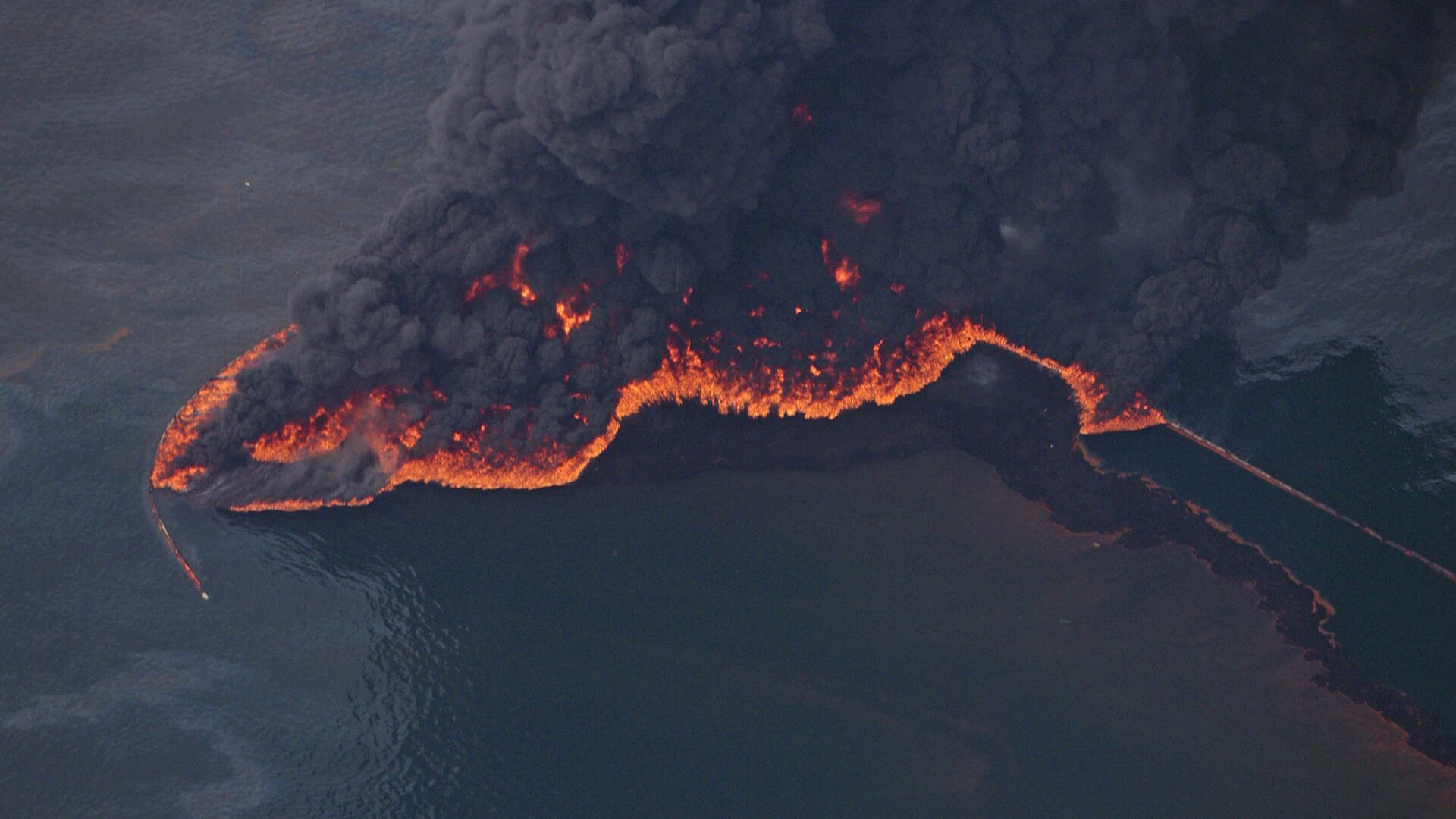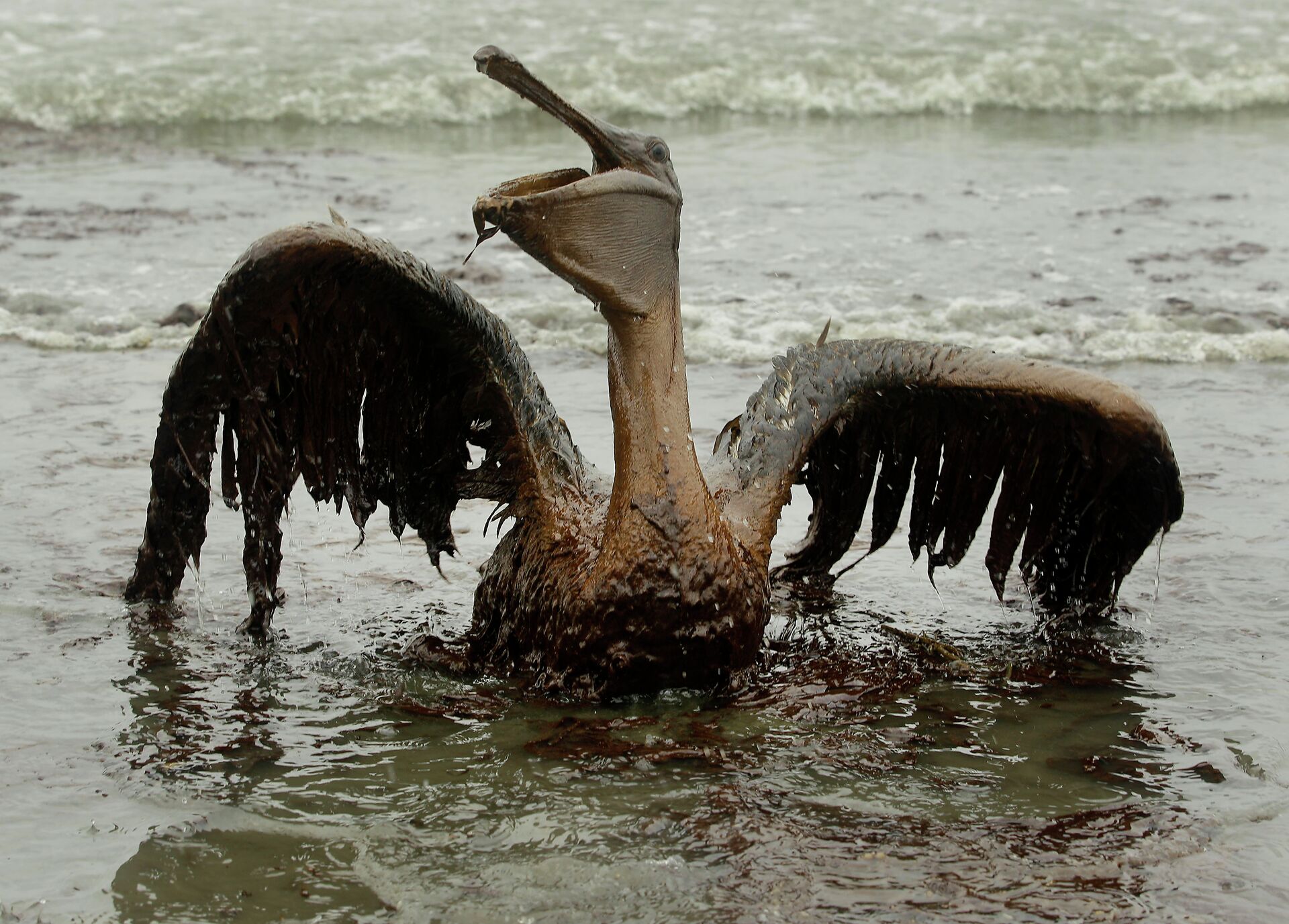Sunlight Can Help Dissolve Oil Into Seawater, Reveals Study of Deepwater Horizon Spill
11:38 GMT 21.02.2022 (Updated: 14:20 GMT 15.11.2022)

© AP Photo / Dave Martin
Subscribe
The 2010 Deepwater Horizon spill caused by an explosion on the oil rig, was the largest such marine incident in United States history. While claiming 11 lives, it also released nearly 210 million gallons of crude oil into the Gulf of Mexico.
Twelve years after the 2010 Deepwater Horizon oil spill, a team of Woods Hole Oceanographic Institution (WHOI) researchers have carried out a study to discover that nearly 10% of the oil floating in the Gulf of Mexico after the disaster has dissolved into seawater via sunlight.
The findings of the research, entitled "Sunlight-driven dissolution is a major fate of oil at sea", have been published in Science Advances.
The process, called "photo-dissolution", is not new in itself, but using custom-built light-emitting diode (LED) reactors the group measured how the rate of the oil fate varies for different types of light.
As scientists created hypothetical spill scenarios, they also juggled varying oil slick thicknesses, seasonal conditions, and global locations.
"… What's new here is our understanding how this process varies with light wavelength, which we determined using the LED reactors. This is the key piece of information that allowed us to estimate the importance of this process during a spill," stated co-author Collin Ward, assistant scientist in WHOI's Marine Chemistry and Geochemistry Department.
The Deepwater Horizon oil spill, an industrial disaster that occurred on 20 April 2010 in the Gulf of Mexico, is estimated to have seen a total discharge of 4.9 Mbbl (210 million US gal; 780,000 m3).
The ecological disaster that ensued caused extensive damage to marine and wildlife habitats and fishing and tourism industries, while scientists were left puzzling over the “environmental” fate of all that oil.

Oil from the Deepwater Horizon has affected wildlife throughout the Gulf of Mexico
© AP Photo / Charlie Riedel
Typically, oil spilled at sea is believed to either biodegrade after microorganisms consume and break it down, or evaporate. Oil may also be stranded on the shoreline.
"The amount of oil that was transformed by sunlight into compounds that dissolved in seawater during the 2010 Deepwater Horizon spill rivals that of commonly accepted oil fates, like biodegradation and stranding on shorelines," wrote Ward.
Lead author of the paper, Danielle Haas Freeman, Massachusetts Institute of Technology/WHOI Joint Program student, underscored that the fresh findings could be instrumental in furthering understanding of where else the oil from such a spill might go.
"If this sizable fraction of oil is being transformed by sunlight and is dissolving into seawater, that might mean that less oil is ending up in other places, like sensitive coastal ecosystems. However, we have to consider the impacts of the compounds on marine organisms before we can decide if the net result is positive or negative," added Freeman.
The team singled out the interesting discovery that, contrary to popular belief, the "photo-dissolution" process is relevant in Arctic waters. This could be critical, they claim, when forecasting the impact of spills on marine ecosystems and determining response tactics.
What remains to be studied is what the potential toxicity of these sunlight-produced compounds might be like.
"While our findings suggest that a substantial fraction of surface oil can dissolve into the ocean after sunlight exposure, a logical next step is to evaluate its persistence and potential harm to aquatic animals," said Collin Ward.



